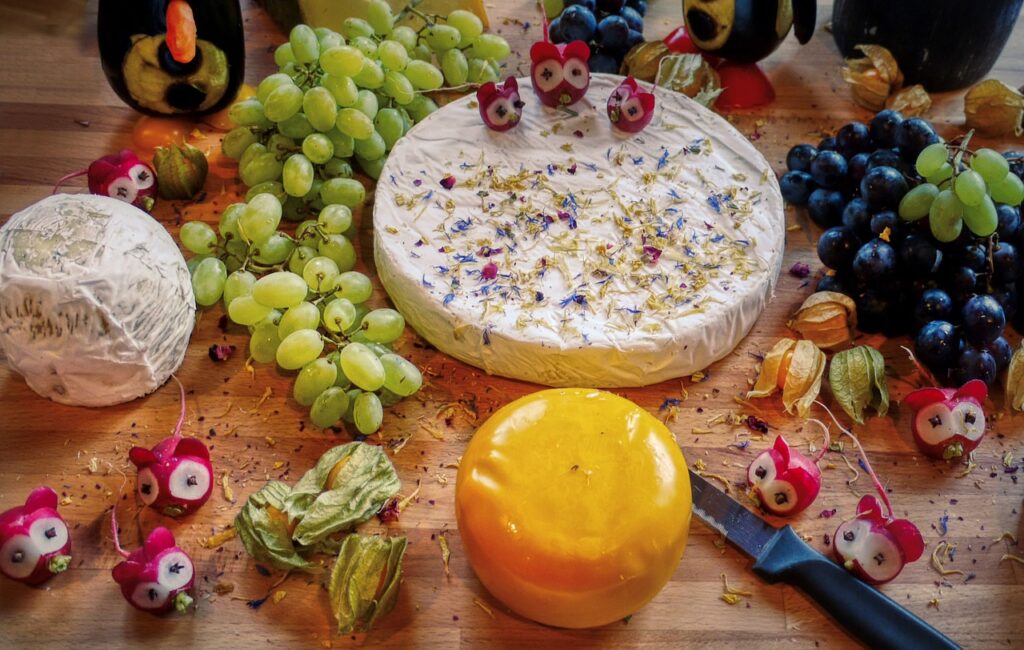The world of cheese is a vast and intricate landscape, dotted with iconic names that evoke a sense of place, history, and unparalleled flavor. Among these esteemed varieties, Gorgonzola stands as a titan of Italian cheesemaking, a blue cheese with a legacy stretching back centuries. Yet, a curious term often appears in culinary discussions and online searches: Masgonzola. While it does not denote an official cheese variety, the term opens a fascinating window into artisanal production, regional dialects, and the pursuit of authentic taste. For enthusiasts and chefs, Masgonzola represents a bridge between traditional Gorgonzola and modern culinary creativity. To understand Masgonzola is to delve deeper into the story of Gorgonzola itself, exploring the craftsmanship, geographical nuances, and culinary applications that make this cheese a global phenomenon. This examination will uncover the meaning behind the term, celebrate the cheese it references, and provide a thorough guide to appreciating one of Italy’s most celebrated gastronomic exports.
The term Masgonzola itself is not a protected designation or a type of cheese recognized by regulatory bodies like the European Union’s PDO (Protected Designation of Origin). Instead, it is widely interpreted as a colloquial expression or portmanteau, most commonly understood to signify “Gorgonzola Mascarpone”. This does not refer to a single cheese but rather to a profoundly popular and decadent blended product. The combination merges the sharp, salty, and complex characteristics of Gorgonzola with the rich, buttery, and luxuriously smooth texture of Mascarpone. The result is a spreadable, versatile cream that tempers the intense pungency of blue mold for a more accessible yet deeply flavorful experience.
Occasionally, Masgonzola may arise from regional dialects or spelling variations. Regardless of origin, its culinary identity is firmly tied to this creamy, indulgent blend. The curiosity surrounding the term highlights a broader interest in authentic Italian cheese and its various preparations. Exploring Masgonzola inevitably circles back to the excellence of its main component: Gorgonzola, a cheese with a history as rich as its flavor.
The Historical and Geographical Roots of Gorgonzola
To fully appreciate Masgonzola, one must first understand the origins of Gorgonzola. Its story is steeped in the pastoral traditions of Northern Italy, specifically Lombardy and Piedmont. The town of Gorgonzola, near Milan, lends its name, though production now spans designated provinces under strict PDO guidelines.
Legend dates the cheese’s accidental discovery to around 879 AD. A lovesick cheesemaker, distracted from his work, left fresh curds overnight. Upon returning, he found them contaminated with ambient blue-green molds but decided to process them anyway. Weeks later, the cheese had developed a uniquely spicy and pleasing flavor. This happy accident laid the foundation for the deliberate, refined production methods used today. The unique microclimate of Alpine foothills, with its cool, humid caves, provides the perfect environment for penicillium glaucum and penicillium roqueforti molds to develop the cheese’s characteristic flavor and marbling.
The PDO status, awarded in 1996, ensures that only cheese produced in the designated areas using traditional methods can bear the Gorgonzola name. This guarantees quality and authenticity, a crucial consideration for anyone exploring Masgonzola or its parent cheese.
The Artisanal Production Process: From Milk to Marbling
Creating authentic Gorgonzola is a meticulous process that blends tradition with skilled craftsmanship. It begins with whole pasteurized cow’s milk sourced from designated regions. Rennet is added to coagulate the milk, forming curds, which are then cut and transferred to large, perforated molds to drain whey. Each wheel is turned repeatedly and salted either dry or in brine.
A pivotal step, known as erborinatura—from the Milanese dialect describing the green marbling—involves introducing penicillin spores to the milk during coagulation. As the cheese ages, it is pierced with thick, stainless steel needles to allow oxygen circulation inside the wheel. This facilitates mold growth and produces the iconic blue veins and aromatic sharpness.
Aging lasts a minimum of 60 days for milder varieties and up to three months or more for spicier types. Temperature-controlled curing rooms and attentive monitoring create the spectrum of flavors that later become part of a Masgonzola-style cream.
Two Souls of One Cheese: Dolce and Piccante
Understanding Gorgonzola’s versatility—and by extension Masgonzola—requires recognizing its two primary varieties: Gorgonzola Dolce and Gorgonzola Piccante.
Gorgonzola Dolce is younger, softer, and milder. Aged minimally, it has a creamy, spreadable texture with pale ivory paste and subtle veining. Its flavor is buttery and slightly sweet, making it ideal for Masgonzola blends where gentle balance is key.
Gorgonzola Piccante, also known as Naturale or Mountain, is firmer and aged longer. It offers a stronger, spicier flavor with pronounced blue veins and a drier texture. This variety shines when eaten alone, crumbled over dishes, or used in recipes demanding a bold flavor statement.
Knowing these differences allows cooks to select the right cheese for any culinary application, enhancing both flavor and texture.
Culinary Applications: Beyond the Masgonzola Blend
Masgonzola as a spreadable cream highlights Gorgonzola’s incredible culinary flexibility. It works beautifully on crostini, crackers, or as a base for fruit chutney garnishes. It melts smoothly into warm pasta with cream and pepper, enriches risotto, flavors stuffed chicken or ravioli, or elevates a hearty sandwich into a gourmet experience.
Traditional Gorgonzola wheels also remain kitchen staples. Dolce lends itself to creamy sauces or dessert pairings with pears, honey, and sweet wines. Piccante excels crumbled over bitter greens, baked into polenta, or incorporated into savory pastries and classic Italian pizzas like Quattro Formaggi.
The cheese pairs elegantly with sweet elements—honey, figs, pears—and nuts like walnuts, hazelnuts, or pecans. In savory contexts, it complements steak, roasted squash, and robust red wines, creating layers of taste and texture.
Selecting, Storing, and Serving for Maximum Enjoyment
High-quality selection is crucial. Look for the PDO seal to ensure authenticity. A whole wheel should feel heavy for its size; the rind must be firm and intact. Cut cheese should have moist interior paste with appropriate veining.
Proper storage preserves flavor. Cheese must breathe: wrap loosely in wax or parchment paper, place in a slightly open container or loosely tied plastic bag in the refrigerator’s least cold compartment, typically the vegetable drawer. Avoid airtight packaging, which traps moisture and fosters unwanted mold.
Before serving, bring cheese to room temperature for at least an hour. This unlocks the full range of aromas and softens texture, delivering the intended tasting experience.
Frequently Asked Questions
What distinguishes Gorgonzola from Roquefort or Stilton?
Differences include milk type, mold strains, and terroir. Gorgonzola uses cow’s milk and penicillium glaucum/roqueforti. Roquefort, a French PDO cheese, uses raw sheep’s milk and matures in natural caves. Stilton, British blue cheese, is cow’s milk-based but crumblier and less salty than Piccante.
Is Gorgonzola vegetarian-friendly?
Traditional Gorgonzola uses animal rennet, making it unsuitable for strict vegetarians. Some producers now use microbial or vegetable rennet—check labels.
Why does Gorgonzola sometimes smell like ammonia?
A slight ammonia scent is a natural aging byproduct, usually near the rind. Airing out or removing a thin rind layer often resolves it. Overpowering ammonia indicates overripe cheese.
Can the rind be eaten?
Technically edible, the rind is tough and intensely flavored. Most consumers remove it to enjoy the softer interior.
Which wines pair best with Gorgonzola?
Rich reds like Barolo, sweet whites like Moscato, and fortified wines such as Port enhance both Dolce and Piccante varieties.
Conclusion: The Enduring Legacy of a Culinary Icon
Exploring Masgonzola deepens appreciation for the artistry behind authentic Gorgonzola. While Masgonzola may be a modern, convenient blend, it depends entirely on centuries-old Italian cheesemaking traditions. It introduces the complex flavors of a legendary cheese to a broader audience in an accessible format.
From its accidental discovery in a small town to its PDO-protected status, Gorgonzola exemplifies culinary heritage. Understanding Dolce and Piccante enables precise culinary application. Proper storage and serving maximize flavor, while its versatility spans spreads, sauces, desserts, and savory dishes. Masgonzola and Gorgonzola together embody a living food culture that values quality, history, and exceptional flavor. They invite home cooks and professional chefs alike to explore artisan cheeses and savor Italy’s rich gastronomic legacy.






